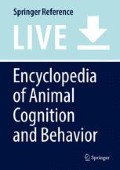References
Ball, G. F., & Wade, J. (2013). The value of comparative approaches to our understanding of puberty as illustrated by investigations in birds and reptiles. Hormones and Behavior, 64(2), 211–214. https://doi.org/10.1016/j.yhbeh.2013.05.002.
Belsky, J., Houts, R. M., & Fearon, R. M. P. (2010). Infant attachment security and the timing of puberty. Psychological Science, 21(9), 1195–1201. https://doi.org/10.1177/0956797610379867.
Chaby, L. E., Cavigelli, S. A., White, A., Wang, K., & Braithwaite, V. A. (2013). Long-term changes in cognitive bias and coping response as a result of chronic unpredictable stress during adolescence. Frontiers in Human Neuroscience, 7, 328. https://doi.org/10.3389/fnhum.2013.00328.
Clarke, H., Dhillo, W. S., & Jayasena, C. N. (2015). Comprehensive review on Kisspeptin and its role in reproductive disorders. Endocrinology and Metabolism (Seoul, Korea), 30(2), 124–141. https://doi.org/10.3803/EnM.2015.30.2.124.
Crone, E. A. (2009). Executive functions in adolescence: Inferences from brain and behavior. Developmental Science, 12(6), 825–830. https://doi.org/10.1111/j.1467-7687.2009.00918.x.
Delemarre-Van De Waal, H. A. (2002). Regulation of puberty. Best Practice and Research: Clinical Endocrinology and Metabolism, 16(1), 1–12. https://doi.org/10.1053/beem.2001.0176.
Golub, M. S., Collman, G. W., Foster, P. M. D., Kimmel, C. A., Meyts, E. R.-D., Reiter, E. O., … Toppari, J. (2008). Pediatrics. Pediatrics. American Academy of Pediatrics. https://doi.org/10.1542/peds.2007-1813f.
Gunnar, M. R., Wewerka, S., Frenn, K., Long, J. D., & Griggs, C. (2009). Developmental changes in hypothalamus-pituitary-adrenal activity over the transition to adolescence: Normative changes and associations with puberty. Development and Psychopathology, 21(1), 69–85. https://doi.org/10.1017/S0954579409000054.
Irwig, M. S., Fraley, G. S., Smith, J. T., Acohido, B. V., Popa, S. M., Cunningham, M. J., … Steiner, R. A. (2004). Kisspeptin Activation of Gonadotropin Releasing Hormone Neurons and Regulation of KiSS-1 mRNA in the Male Rat. Neuroendocrinology, 80(4), 264–272. https://doi.org/10.1159/000083140.
Lyss, P. J., Andersen, S. L., LeBlanc, C. J., & Teicher, M. H. (1999). Degree of neuronal activation following FG-7142 changes across regions during development. Brain Research. Developmental Brain Research, 116(2), 201–203. https://doi.org/10.1016/S0165-3806(99)00069-3.
McCormick, C. M., & Mathews, I. Z. (2010). Adolescent development, hypothalamic-pituitary-adrenal function, and programming of adult learning and memory. Progress in Neuro-Psychopharmacology and Biological Psychiatry, 34(5), 756–765. https://doi.org/10.1016/j.pnpbp.2009.09.019.
Nelson, E. E., Leibenluft, E., McClure, E. B., & Pine, D. S. (2005). The social re-orientation of adolescence: A neuroscience perspective on the process and its relation to psychopathology. Psychological Medicine, 35(2), 163–174. Retrieved from http://www.ncbi.nlm.nih.gov/pubmed/15841674.
Paul, E. S., Harding, E. J., & Mendl, M. (2005). Measuring emotional processes in animals: The utility of a cognitive approach. Neuroscience & Biobehavioral Reviews, 29(3), 469–491. https://doi.org/10.1016/J.NEUBIOREV.2005.01.002.
Pautassi, R. M., Myers, M., Spear, L. P., Molina, J. C., & Spear, N. E. (2008). Adolescent but not adult rats exhibit ethanol-mediated appetitive second-order conditioning. Alcoholism, Clinical and Experimental Research, 32(11), 2016–2027. https://doi.org/10.1111/j.1530-0277.2008.00789.x.
Peper, J. S., & Dahl, R. E. (2013). The teenage brain: Surging hormones-brain-behavior interactions during puberty. Current Directions in Psychological Science, 22(2), 134–139. https://doi.org/10.1177/0963721412473755.
Plant, T. M. (2015). Neuroendocrine control of the onset of puberty. Frontiers in Neuroendocrinology, 38, 73–88. https://doi.org/10.1016/j.yfrne.2015.04.002.
Plant, T. M., & Zorub, D. S. (1982). The role of nongonadal restraint of gonadotropin secretion in the delay of the onset of puberty in the rhesus monkey (Macaca mulatta). Journal of Animal Science, 55, 43–55. Retrieved from http://jas.fass.org/content/55/Supplement_II/43.
Romeo, R. D., Richardson, H. N., & Sisk, C. L. (2002). Puberty and the maturation of the male brain and sexual behavior: Recasting a behavioral potential. Neuroscience and Biobehavioral Reviews, 26(3), 381–391. Retrieved from http://www.ncbi.nlm.nih.gov/pubmed/12034137.
Schulz, K. M., & Sisk, C. L. (2016). The organizing actions of adolescent gonadal steroid hormones on brain and behavioral development. Neuroscience & Biobehavioral Reviews, 70, 148–158. https://doi.org/10.1016/j.neubiorev.2016.07.036.
Schulz, K. M., Richardson, H. N., Zehr, J. L., Osetek, A. J., Menard, T. A., & Sisk, C. L. (2004). Gonadal hormones masculinize and defeminize reproductive behaviors during puberty in the male Syrian hamster. Hormones and Behavior, 45(4), 242–249. https://doi.org/10.1016/j.yhbeh.2003.12.007.
Schulz, K. M., Molenda-Figueira, H. A., & Sisk, C. L. (2009). Back to the future: The organizational-Activational hypothesis adapted to puberty and adolescence. Hormones and Behavior, 55(5), 597–604. https://doi.org/10.1016/j.yhbeh.2009.03.010.Back.
Shields, G. S., Moons, W. G., Tewell, C. A., & Yonelinas, A. P. (2016). The effect of negative affect on cognition: Anxiety, not anger, impairs executive function. Emotion (Washington, DC), 16(6), 792–797. https://doi.org/10.1037/emo0000151.
Sisk, C. L., & Foster, D. L. (2004). The neural basis of puberty and adolescence. Nature Neuroscience, 7(10), 1040–1047. https://doi.org/10.1038/nn1326.
Sisk, C. L., & Zehr, J. L. (2005). Pubertal hormones organize the adolescent brain and behavior. Frontiers in Neuroendocrinology, 26(3–4), 163–174. https://doi.org/10.1016/j.yfrne.2005.10.003.
Spear, L. P. (2000). The adolescent brain and age-related behavioral manifestations. Neuroscience and Biobehavioral Reviews, 24(4), 417–463. Retrieved from http://www.ncbi.nlm.nih.gov/pubmed/10817843.
Spear, L. P. (2009). Heightened stress responsivity and emotional reactivity during pubertal maturation: Implications for psychopathology. Development and Psychopathology, 21(1), 87–97. https://doi.org/10.1017/S0954579409000066.
Steinberg, L. (2005). Cognitive and affective development in adolescence. Trends in Cognitive Sciences, 9(2), 69–74. https://doi.org/10.1016/j.tics.2004.12.005.
Stroud, L. R., Foster, E., Papandonatos, G. D., Handwerger, K., Granger, D. A., Kivlighan, K. T., & Niaura, R. (2009). Stress response and the adolescent transition: Performance versus peer rejection stressors. Development and Psychopathology, 21(1), 47–68. https://doi.org/10.1017/S0954579409000042.
van Haaster, L. H., & de Rooij, D. G. (1993). Spermatogenesis is accelerated in the immature Djungarian and Chinese hamster and rat. Biology of Reproduction, 49(6), 1229–1235. Retrieved from http://www.ncbi.nlm.nih.gov/pubmed/8286605.
Author information
Authors and Affiliations
Corresponding author
Editor information
Editors and Affiliations
Section Editor information
Rights and permissions
Copyright information
© 2019 Springer Nature Switzerland AG
About this entry
Cite this entry
Harvey, N.D. (2019). Adolescence. In: Vonk, J., Shackelford, T. (eds) Encyclopedia of Animal Cognition and Behavior. Springer, Cham. https://doi.org/10.1007/978-3-319-47829-6_532-1
Download citation
DOI: https://doi.org/10.1007/978-3-319-47829-6_532-1
Received:
Accepted:
Published:
Publisher Name: Springer, Cham
Print ISBN: 978-3-319-47829-6
Online ISBN: 978-3-319-47829-6
eBook Packages: Springer Reference Behavioral Science and PsychologyReference Module Humanities and Social SciencesReference Module Business, Economics and Social Sciences

